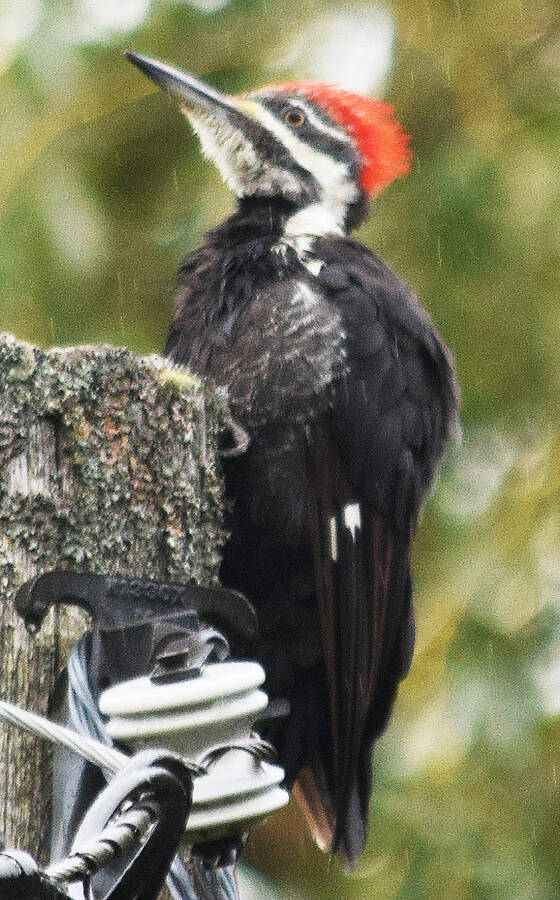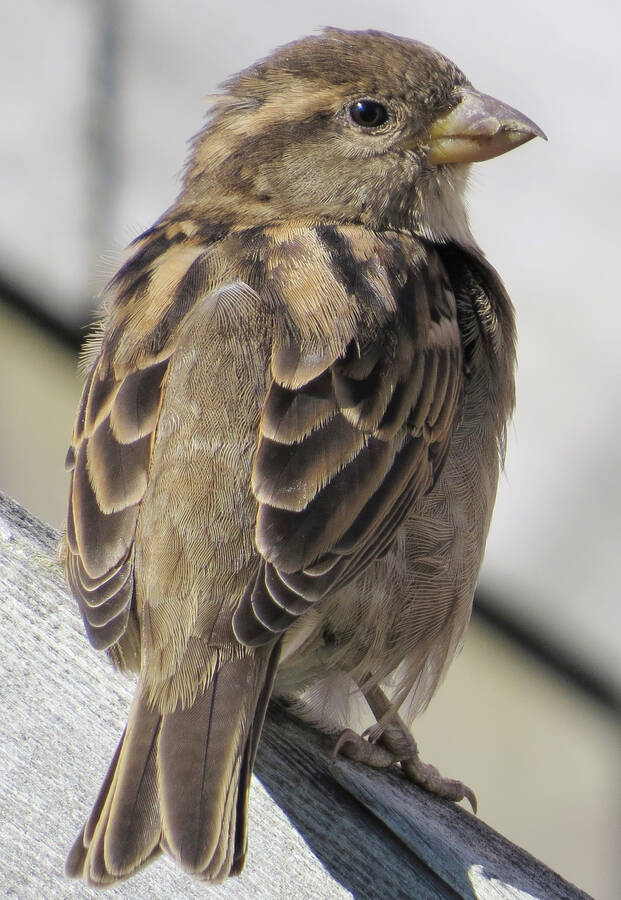
2022-09-28
Taking a closer look at the pileated woodpecker
On Sept. 19, Kevin McBain saw a pileated woodpecker in his front yard at Conquerall Bank. This is a bird that I will never get tired of seeing.
The pileated woodpecker is a resident of forests from British Columbia south through Washington, Idaho, Montana, Oregon to California and the Sierra Nevada Mountains and from the Mackenzie to Manitoba, Ontario, Quebec, New Brunswick and Nova Scotia and also in Atlanta, Kansas, Oklahoma, Texas, the Gulf Coast and Florida
The pileated woodpecker is 40 to 48.75 cm long with a wingspan of 67.5 to 75 cm. It is a large, crow black woodpecker with both sexes having a red crest and when perched a solid black back.
The pileated woodpecker has a large black bill and the male has a scarlet mustache, extending from the base of the bill rear-ward more than half the length of his head. In the female only the rear half of the crest is scarlet and she has a black streak extending rearward from the bill. In flight there are white patches on the front part of the wings.
The food of the pileated woodpecker is wood-boring beetles, flies, mosquitoes, moths, ants, grubs, wild grapes, seeds of sumac, fruits of Virginia creeper, sour gum, poison oak, poison ivy, and dogwoods and also wild cherries. They come to feeders for suet, pecan and walnut meats and also for ground pecans and melted suet.
There were lots of hawks moving through our area between Sept. 15 and 19. I was at Second Peninsula Sept. 15 and observed seven red-tailed hawks and two northern harriers. On Sept. 19, David Watson saw a turkey vulture flying over the Grimm Road. On that day, Barbara McLean saw two turkey vultures fly over her house in Lunenburg. Barbara also photographed a merlin at Second Peninsula on the same day and I saw a sharp-shinned hawk in Lunenburg.
I was pleased to see an American golden plover and a brown-headed cowbird at Second Peninsula on Sept. 15. A Baltimore oriole was a nice surprise for me in Broad Cove on Sept. 18.
Sheila Wilneff of Bridgewater has a pond behind the apartment building where she lives. She reported seeing a solitary sandpiper and a great blue heron there.
Glenn Rhodenizer of Second Peninsula used to have lots of house sparrows at the family farm. They all disappeared due to a disease that was going around and hitting that particular species hard. That was about two years ago. Glenn reported seeing one house sparrow there recently. Once upon a time you could find house sparrows all over Lunenburg County. The only reliable location now for them is in Lunenburg.
On a visit to Cape Sable Island, Barbara McLean saw a whimbrel. It was her first one. There have been many rarer species seen across the province.
On Sept. 10, on Brier Island, there were Missippi kites, northern rough-winged swallows and a Lincoln's sparrow. Sept. 11 produced an eastern phoebe, a black-billed cuckoo, a willow flycatcher, Philadelphia vireos, and Caspian terns on Brier Island. On that same day a red-shouldered hawk and a Wilson's warbler was discovered at the French Basin Trail by Rick Whitham.
Angela MacDonald found a red-bellied woodpecker at Annapolis Royal on that day also. On Sept. 12, Diane Leblanc reported a brown pelican at Prospect Village. Natalie Barkhouse-Bishop saw a rufous hummingbird at Bayswater. Sept. 17 provided a blue grosbeak for Natalie at Sandy Cove Road. On that same date Angela MacDonald posted that two American avocets were still present at Rainbow Haven and Russell Crosby sighted a Swainson's hawk at Brier Island. On Sept. 18 an American white pelican was found at Rocky Lake Drive by Gary Poole.
A tricoloured heron along the West Chezzetcook Shore Road on Sept. 19 was a great discovery for Natalie Barkhouse-Bishop. A common gallinule showed up at Russell Lake on that day. On Sept. 20, Ken McKenna and a group of birders on Seal Island reported a Say's phoebe. On that same day, an American White pelican was found at the Glace Bay Sanctuary in Cape Breton.
Over the past few weeks lark sparrows showed up all over the province. Hartlen's Point was a hotspot for birds with a white-crowned sparrow, a lark sparrow, a blue-gray gnatcatcher, a prairie warbler, a Philadelphia vireo, a yellow-breasted chat, a blue-winged warbler, two dickcissels, a northern waterthrush, a gray-cheeked thrush and a yellow-billed cuckoo.
Both Shelburne County and Yarmouth Counties also produced great birds. Two American oystercatchers are still being seen and other birds were lark sparrows, a yellow-headed blackbird, a clay-coloured sparrow, a mourning warbler, a warbling vireo, a blue-gray gnatchatcher, and a dickcissel.
You can reach me at (902) 693-2174 or email jrhbirder@hotmail.com.







